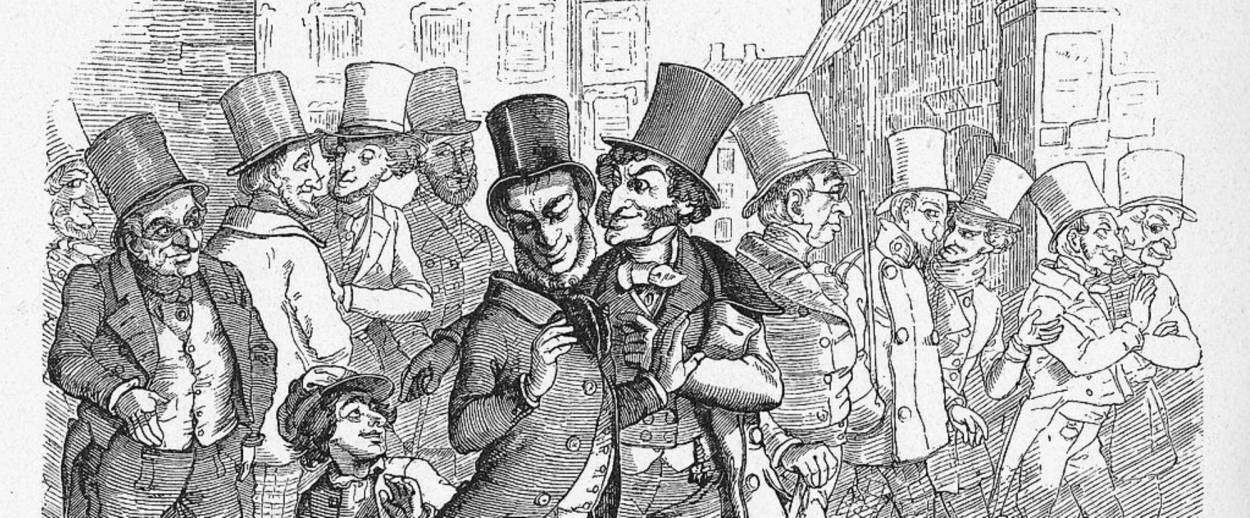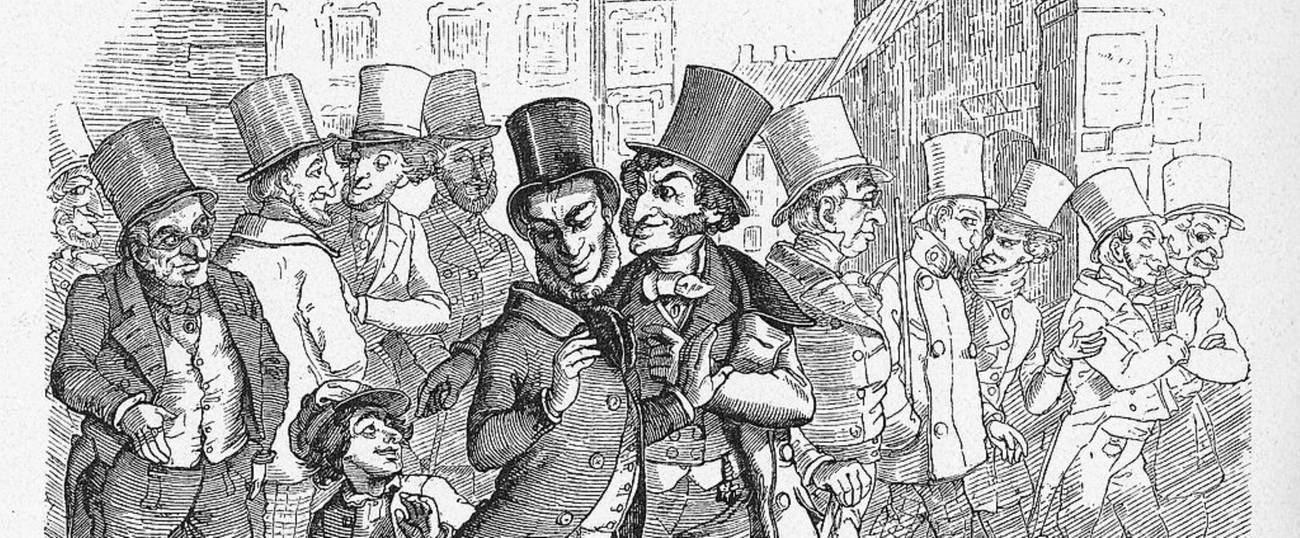The History of Anti-Semitic Caricatures, Upon Further Examination
An article in ‘The New York Review of Books’ argues that the first anti-Jewish cartoon from 1233 may not quite be what it seems




We gather here today—in the Internet age of the (((echo))) designation and the Shlomo meme—to bemoan the state of the anti-Semitic caricature. Oh, how far the world’s Jew-hating cartoonists have fallen from their perch! Gone are the halcyon days of Der Sturmer and Thomas Rowlandson, whose pens were dipped in the type of spite that gives the world creative and original portraits such as these.
Of course, many of these caricatures have long been said to owe their debts to a finely detailed scene depicted in the upper margin of an early 13th century English royal tax form. Many scholars believe the cartoon to be the oldest known anti-Semitic sketch, and, according to historian Sara Lipton, writing in The New York Review of Books, it’s “something of a celebrity” in circles where being a stickler for classical anti-Semitic iconography is necessary for entry.
The earliest known anti-Jewish caricature…shows three bizarre-looking Jews standing inside a schematic castle, which is being attacked by a host of cartoonish horned, beak-nosed demons. Another, larger demon in the center of the castle tweaks the freakishly long noses of two of the Jews, as if to underscore the resemblance between their profiles and his own.
However, Lipton has unearthed evidence that may suggest that this anti-Semitic touchstone may not be what it seems: The “nasty doodle” may actually represent much larger grievances of the “artist” rather than your garden variety anti-Semitism. Her scrutiny falls on a figure long considered the linchpin of the anti-Semitic assumption, an unidentified man, presumably a Jew, who forlornly holds up a scale filled with coins.
Instead, she said he’s “no Jew at all,” and the depiction as a whole is “political satire.”
Long presumed to be another Jew among several other hook-nosed caricatures, Lipton argues that the man’s anonymity and lack of distinctively anti-Semitic features are meant to evoke an important political satire related to the corruption and deception of King Henry III and his unpopular executive in charge of the Exechequer (essentially, their IRS and Federal Reserve), Peter des Roches. Des Roches in particular represented a foreignness and hypocrisy in his dealings that stuck in the craw of good English noblemen. While promoting and profiting from local Jewish moneylenders, des Roches publicly trumpeted his support for anti-Jewish measures that that angered located noblemen not because of their discriminatory content, but for their diversion from what they saw as more legitimate economic concerns.
Our clerk, a relatively low-level royal functionary, was not condemning Jewish usury out of moral outrage or religious bigotry. Rather, he was protesting the fact that his bureau had been handed over to “outsiders” and brought into disrepute by an unscrupulous favorite prosecuting unpopular policies.
So, rather than functioning as straight anti-Semitism, the cartoon, Lipton writes, was drawn as political satire, criticizing royal policy by Trojan-horsing it in the much more palatable critique of Jews. In fact, several prominent Jews of the day are depicted in the drawing, further distancing the meaning from mere hatred. The document which this doodle graced was only “seen and snickered at by a handful of men,” according to Lipton, and yet, she argues, it still represents the way in which the insidious nature of in-jokes can have unintended consequences; less than 60 years after the drawing of this cartoon, Jews were expelled from England for the next four centuries.
As wide-scale proliferation of anti-Semitic memes continues, just remember that they might be brilliant social satire! Or not, of course.
Related: Iran’s Supreme Leader’s Anti-Semitic Cartoon
Trump Supporters Hurl Anti-Semitic Twitter Attacks at ‘New York Times’ Editor
Journalist Files Police Report After Receiving Anti-Semitic Threats for Melania Trump Profile
Jesse Bernstein is a former Intern at Tablet.